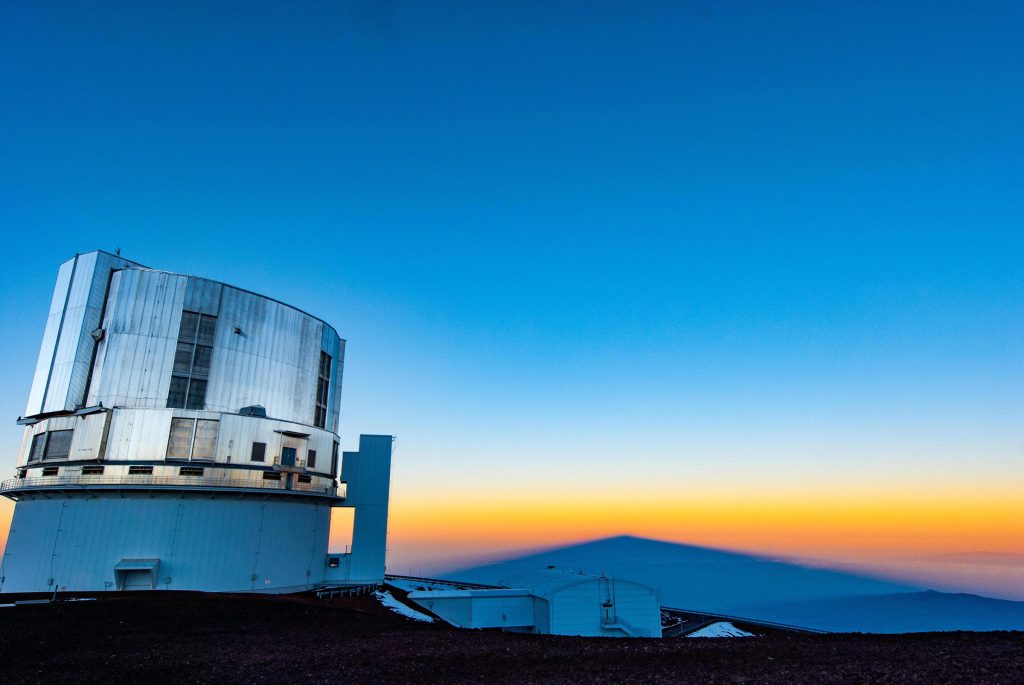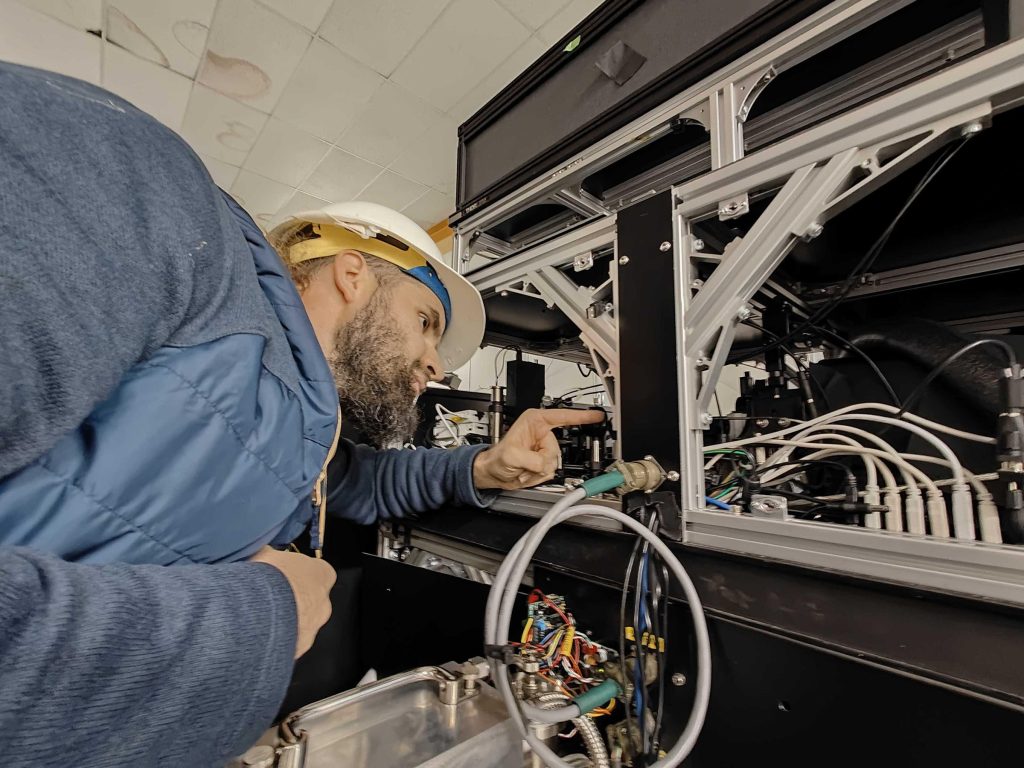Astronomers make breakthrough discovery with a new instrument on Subaru Telescope
A groundbreaking new instrument on the Subaru Telescope on Maunakea sets a new benchmark for how scientists study distant stars and planets.

The instrument, a photonic lantern, allows astronomers to see deeper into space than ever before using a single telescope. It was developed with the help of a University of Hawaiʻi at Mānoa faculty member.
The photonic lantern separates starlight into multiple channels, like breaking a musical chord into individual notes, which allows computers to rebuild an ultra-clear image. It’s part of a new instrument called FIRST-PL, developed and led by the University of Hawaiʻi and the Paris Observatory, and installed on the advanced optics platform Subaru Coronagraphic Extreme Adaptive Optics (SCExAO) at the Subaru Telescope.
“What excites me most is that this instrument blends cutting-edge photonics with the precision engineering done here in Hawaiʻi,” said Sébastien Vievard, a faculty member from the Space Science and Engineering Initiative, a joint program of the University of Hawaiʻi Mānoa College of Engineering and Institute for Astronomy “It shows how collaboration across the world, and across disciplines, can literally change the way we see the cosmos.”

The breakthrough, published in “The Astrophysical Journal Letters,” used the new setup to study a nearby star called Beta Canis Minoris and revealed that its fast-spinning gas disk is unexpectedly lopsided, a detail never seen until now.
“This device splits the starlight according to its patterns of fluctuation, keeping subtle details that are otherwise lost. By reassembling the measurements of the outputs, we could reconstruct a very high-resolution image of a disk around a nearby star,” said Yoo Jung Kim, a graduate student at the University of California, Los Angeles, and lead author of the study.
The international team included researchers from the University of Hawaiʻi, University of California, Los Angeles, Paris Observatory, University of Sydney and Subaru Telescope.
The achievement marks a milestone for the University of Hawaiʻi’s new Space Science and Engineering Initiative, which launched its first engineering courses at the University of Hawaiʻi Hilo in fall 2024. The initiative aims to position Hawaiʻi as a global hub for space research, technology development and workforce training.
Vievard, one of the program’s founding faculty members, is helping to lead this new academic path that blends classroom learning with hands-on engineering experience.
To learn more, watch a video on the University of Hawaiʻi website.



